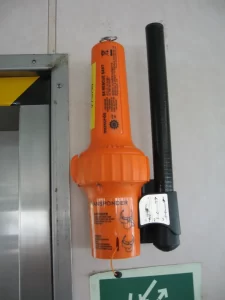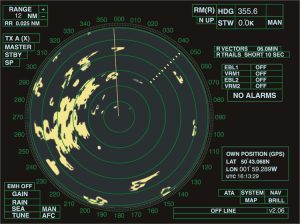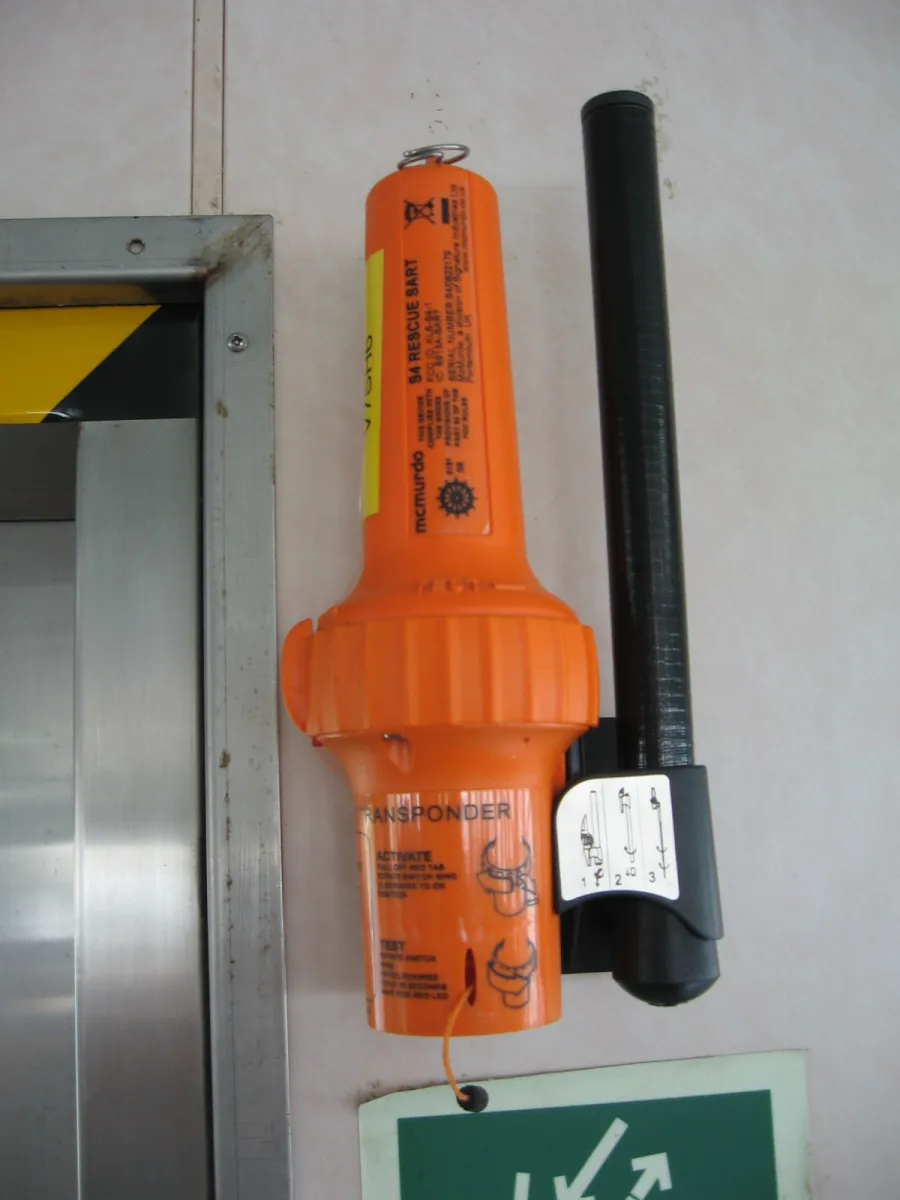A Search and Rescue Transponder (SART) is a critical safety device used in maritime search and rescue operations. It is designed to respond to signals from search radar, emitting a series of returns that provide a precise location, assisting rescue efforts. SARTs are mandatory on vessels that adhere to the Global Maritime Distress Safety System (GMDSS) and are typically mounted on lifeboats and liferafts. These devices are crucial for enhancing the visibility of vessels in distress to SAR teams, significantly improving the chances of timely and successful rescues at sea.

The Search and Rescue Transponder (SART), as defined by the SOLAS Convention and enforced by the International Maritime Organization (IMO), is an essential navigational device designed to assist in the efficient location of vessels or life rafts in distress. Under the SOLAS Convention, specifically within the requirements for the Global Maritime Distress and Safety System (GMDSS), SARTs are mandated for certain classes of sea-going vessels. These devices are critical in search and rescue (SAR) operations, emitting signals that are detected by SAR radars, creating a series of precise, recognizable responses on the radar screen. This function greatly enhances the accuracy and speed of SAR efforts, directing rescuers to the exact location of the distressed vessel or life raft.
SART devices operate by responding to radar signals from SAR ships or aircraft. When a radar signal hits the SART, the device transmits a return signal that appears on the radar screen as a line of 12 dots, leading towards the SART’s location. This unique signature ensures that the distress signal can be distinguished from other radar returns, focusing the search effort.

Initial detection of a SART indicating range and bearing

As the SART gets closer the dots turn to arcs

Within 1 mile of the SART the screen is cluttered. Source: https://rnli-sarroc.org.uk/sarts.html
The IMO’s regulations stipulate that all GMDSS-equipped ships carry SARTs as part of their essential safety gear. This includes passenger ships and commercial vessels of a certain size, engaged in international voyages. The regulations cover not only the mandatory carriage of SARTs but also their maintenance, testing, and operational readiness. Vessels are required to perform regular checks to ensure that their SARTs are functional and accessible in the event of an emergency.
In addition to the technical and operational guidelines provided by the SOLAS Convention and IMO, there are specific training recommendations for crew members on the use of SARTs. These training programs are designed to ensure that in the event of an emergency, the crew is proficient in deploying and activating the SARTs, maximizing the efficiency of search and rescue operations.
The Search and Rescue Transponder (SART) requirements under the International Convention for the Safety of Life at Sea (SOLAS) are designed to support maritime search and rescue (SAR) operations. SART devices are used to locate a distress vessel by emitting signals that can be detected by SAR radar. These devices are vital for enhancing the safety and efficiency of rescue operations at sea. Here’s a summary of the key SART requirements in the SOLAS Convention:
- Carriage Requirements: SOLAS Chapter IV – Radiocommunications requires certain classes of vessels to carry SART devices. Specifically, passenger ships of any size and cargo ships of 300 gross tonnage and upwards are required to carry SARTs. The exact number of SARTs required can vary based on the ship’s size and the nature of its voyage.
- Performance Standards: The performance standards for SARTs are specified in the SOLAS Convention and related documents such as the International Maritime Organization (IMO) resolutions. These standards cover the operational characteristics of SARTs, such as frequency, range, and response patterns. SARTs must be capable of transmitting signals that can be detected by X-band (9 GHz) radar at a range of at least 5 nautical miles, with a longer range being preferable.

- Maintenance and Testing: SOLAS requires that SARTs, like all safety equipment, be regularly maintained and tested to ensure they are in good working condition. This includes periodic testing as per the manufacturer’s guidelines and immediate testing following any incident that might compromise the device’s functionality.
- Stowage: SARTs must be stowed in locations where they can be rapidly deployed in the event of an emergency. Typically, this means being easily accessible from the deck and in locations near lifeboats and liferafts.
- Training: Crew members must be trained in the proper use of SARTs, including deployment, operation, and troubleshooting. This is crucial for ensuring that in an emergency, the SART can be quickly and effectively used to aid in the rescue of the vessel and its occupants.
- Documentation: Ships must carry appropriate documentation for their SARTs, including manuals, maintenance records, and certificates of compliance with international standards.
These requirements are part of SOLAS’s broader commitment to ensuring the safety of life at sea by enhancing the effectiveness of search and rescue operations. Compliance with these requirements is checked by maritime authorities and classification societies to ensure that vessels are adequately equipped to deal with emergencies.


Hi i am kavin, its my first time to commenting anyplace, when i read this post i thought i could also make comment due to this brilliant paragraph.
I used to be suggested this website through my cousin.
I’m now not sure whether or not this put up is written through him as no one else recognise such particular about
my difficulty. You’re wonderful! Thank you!
Aw, this was an exceptionally nice post. Taking a few minutes and actual effort to
make a superb article? but what can I say? I put
things off a whole lot and never seem to get anything done.
I believe that is among the so much important info for
me. And i am happy studying your article. But wanna commentary on few common things, The site
style is great, the articles is in reality excellent :
D. Good task, cheers
Hi there Dear, are you truly visiting this site on a regular
basis, if so after that you will definitely obtain nice experience.
Really cool layout! Are you dealing with webtrafficgeeks for
extra traffic?
Tremendoᥙs thikngѕ here. I am very happy to look your article.
Ƭhanks a lοt and I’m haqving a look ahead to contact you.
Hello, for all time i used to check webpage posts here
early in the morning, for the reason that i enjoy to find
out more and more.
Thanks for another informative web site. The place else may I am getting that type of info written in such a perfect
manner? I have a undertaking that I’m just now running on,
and I’ve been at the look out for such information.
Nice answers in return of this query with real arguments and telling everything
regarding that.
I don’t even understand how I finished up right here, however I believed
this post was once great. I do not realize
who you’re however certainly you are going to a famous blogger in case you
aren’t already. Cheers!
Hello there! This post couldn’t be written much better! Looking through this article reminds me of my previous roommate!
He always kept talking about this. I am going to send this article to him.
Fairly certain he will have a very good read. I appreciate you for sharing!
Very good blog! Do you have any tips for aspiring writers? I’m planning to start my own website soon but I’m a little lost on everything. Would you suggest starting with a free platform like WordPress or go for a paid option? There are so many options out there that I’m completely confused .. Any tips? Thanks!
Quality posts is the main to invite the visitors to visit the web page, that’s what this web page is providing.
Fantastic post! I genuinely enjoyed reading it. You have done a solid job presenting the topic. Looking forward to more content like this in the future. Keep it up!
Having read this I thought it was extremely informative. I appreciate you taking the time and energy to put this short article together. I once again find myself personally spending a significant amount of time both reading and posting comments. But so what, it was still worthwhile!
hello!,I really like your writing so so much! share we keep up a correspondence more about your article on AOL? I need a specialist on this space to resolve my problem. May be that’s you! Looking forward to see you. |
Hey there! This is my first comment here so I just wanted to give
a quick shout out and say I really enjoy reading your blog posts.
Can you suggest any other blogs/websites/forums that cover the same subjects?
Many thanks!
Your method of explaining all in this post is in fact good, all be able
to effortlessly understand it, Thanks a lot.
Excellent way of describing, and good post to obtain information on the topic of my presentation subject, which i am going to deliver in school.
This is a really good tip particularly to those fresh to the blogosphere. Brief but very accurate info… Thank you for sharing this one. A must read article!
That is a very good tip especially to those fresh to the blogosphere. Brief but very precise info… Many thanks for sharing this one. A must read article!
Appreciate the content you put out!
Bookmarking this for later.
Your blog always inspires me.
After exploring a few of the blog articles on your site, I truly like your technique of writing a blog.
I added it to my bookmark website list and will be checking back in the near future.
Take a look at my website too and tell me your opinion.
Great blog! Do you have any helpful hints for aspiring writers?
I’m hoping to start my own site soon but I’m a little lost on everything.
Would you advise starting with a free platform like WordPress or go for a
paid option? There are so many options out there that I’m
totally overwhelmed .. Any ideas? Cheers!
I enjoy what you guys are up too. This type of clever work and exposure!
Keep up the terrific works guys I’ve you guys to my blogroll.
Highly descriptive post, I enjoyed that bit. Will there be a part
2?
Wow, this post is nice, my sister is analyzing
these things, so I am going to tell her.
Pretty nice post. I just stumbled upon your blog
and wanted to say that I have really enjoyed surfing around your blog posts.
After all I’ll be subscribing to your feed and I
hope you write again soon!
I got this website from my pal who informed me concerning this
site and now this time I am browsing this web site and reading very informative posts here.
I don’t know if it’s just me or if everyone else encountering problems with your site.
It appears as though some of the written text on your posts are running off the screen. Can someone else
please comment and let me know if this is happening to them
as well? This could be a issue with my web browser because I’ve had this happen previously.
Many thanks
I like the helpful information you provide in your articles.
I’ll bookmark your blog and check again here frequently.
I’m quite certain I will learn many new stuff right here!
Good luck for the next!
Hi! This is my first visit to your blog! We are a team
of volunteers and starting a new project in a community
in the same niche. Your blog provided us valuable information to work on. You have done
a extraordinary job!
You really make it seem so easy with your presentation but I find
this topic to be actually something which I think I would never understand.
It seems too complex and extremely broad for me. I’m
looking forward for your next post, I will try to get the hang
of it!
I appreciate, cause I found exactly what I was having a look for.
You’ve ended my 4 day long hunt! God Bless you man. Have a great day.
Bye
There is definately a great deal to learn about this issue.
I like all of the points you’ve made.
Cool, I’ve been looking for this one for a long time
interesting for a very long time
Thanks for your marvelous posting! I actually enjoyed reading it,
you happen to be a great author.I will make sure to bookmark your blog and definitely will come back
from now on. I want to encourage you to ultimately continue your great writing,
have a nice evening!
very interesting, but nothing sensible
Amazing all kinds of very good tips.
Hello, I log on to your new stuff daily. Your story-telling style is witty, keep doing what you’re doing!